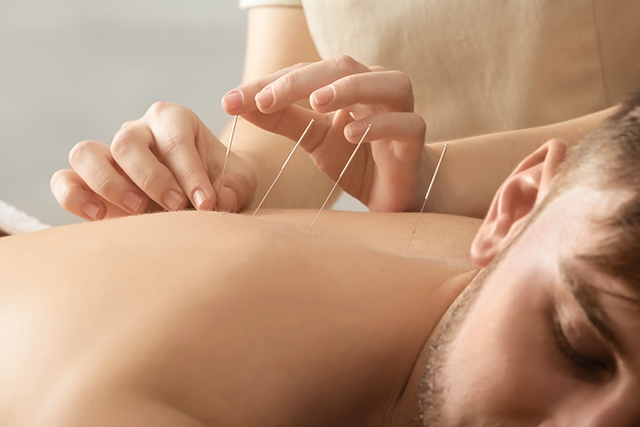Acupuncture and massage reduced pain and enhanced outcomes in fatigue, insomnia, and quality of life over a 26-week period, according to results from the randomized IMPACT trial (ClinicalTrials.gov Identifier: NCT04095234). Notably, no significant disparity between the treatments was observed.
However, further research is essential to determine the optimal integration of these methods into pain treatment, aiming to enhance symptom management for the expanding population of people living with advanced cancer. These results were published in JAMA Network Open.
The aim of the IMPACT trial was to assess how acupuncture and massage affects musculoskeletal pain in patients with advanced cancer for comparative analysis.
The primary endpoint of the IMPACT trial was change in the pain intensity score between the initial assessment and the 26-week mark. Secondary endpoints were fatigue, insomnia, and quality of life. The primary outcome was assessed using the Brief Pain Inventory, which rated intensity as a score of 0 to 10, with higher scores indicating heightened pain intensity or interference.
A total of 298 participants, mean age 58.7 years (SD, 14.1), were enrolled, including 200 (67.1%) women, 33 (11.1%) Black patients, 220 (74.1%) White patients, and 46 (15.4%) Hispanic patients; 78.5% of all patients had solid tumors.
The baseline mean worst pain score was 6.9 (SD, 1.5). Across 26 weeks, deceases in the Brief Pain Inventory worst pain scores were reported in both acupuncture (mean change, −2.53 points; 95% CI, −2.92 to −2.15) and massage (mean change, −3.01 points; 95% CI, −3.38 to −2.63) groups.
However, the difference between the 2 groups was not statistically significant (−0.48; 95% CI, −0.98 to 0.03; P =.07). Both treatments also showed improvements in fatigue, insomnia, and quality of life, with no notable differences between the groups. Mild adverse events were reported, including bruising (6.5% in the acupuncture group) and transient soreness (15.1% in the massage group).
The IMPACT trial had several limitations. No control group made it difficult to evaluate the specific impact of the interventions. The nature of the interventions prevented blinding to both clinicians and patients. Although the duration of the trial was the same between treatment groups, massage therapists had more clinician-patient interactions. Improvements in pain could have been due to nonintervention effects. Additionally, the COVID-19 pandemic interrupted treatment for some patients. Finally, the rigorous training of therapists for this study might limit its generalizability to community settings with varied delivery of clinical care.
“Given that patients with advanced cancer often have pain in multiple locations due to their disease and oncologic treatment, expanding Medicare coverage to include other pain locations, as well as massage, is needed to promote equitable and effective pain management for patients with cancer. More educational effort should also be directed at training acupuncturists or massage therapists on safe and effective practice for patients with advanced cancer,” noted the authors.
Reference
Epstein AS, Liou KT, Romero SAD, et al. Acupuncture vs massage for pain in patients living with advanced cancer: the IMPACT Randomized Clinical Trial. JAMA Netw Open. 2023;6(11):e2342482. doi:10.1001/jamanetworkopen.2023.42482
